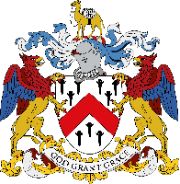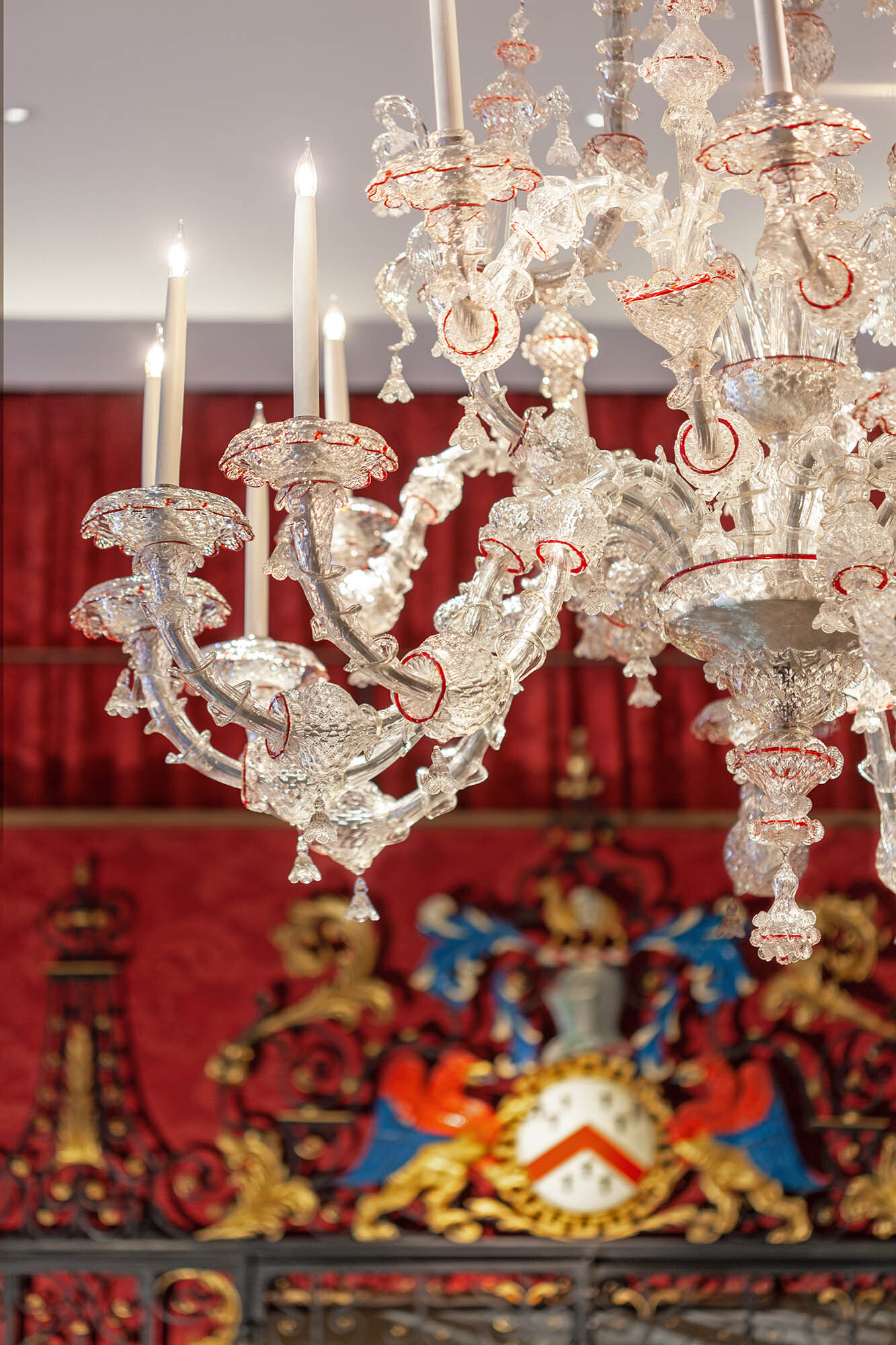This series of historical highlights concentrates on objects connected with the Grocers’ Company and its Members across the country, a sort of Grocer safari. The word ‘safari’ is defined as ‘an expedition to observe or hunt animals in their natural habitat’, in this case we will be hunting mostly camels, and their natural habitat, in this hunt, is somewhat esoteric. The camel in the stained glass window illustrated here can be found in Oxford, in the Museum of the History of Science on Broad Street. It greets the visitor who steps through the ground floor room and looks up the main staircase.
No-one could tell me why it was there, so the hunt was on to fund out. The answer was swiftly found in the Grocers’ Company Court Minutes of 25th May 1938. A note refers to an invitation from the curator of the Museum to the Master and Wardens to attend the unveiling of the window in Oxford. Sadly no-one was free to attend. The Grocers (along with the Mercers and Merchant Taylors) had given money towards the alteration of the Museum, which in 1935 became what was called the Museum of the History of Science. The building had begun its life in 1683 as the world’s first purpose-built public museum open to the public, created to house the collection of Elias Ashmole. In 1894 the growing collection was moved to Beaumont Street, into what is now known as The Ashmolean. In 1924 the History of Science Museum was founded in the old building, based on the scientific instrument collection of Lewis Evans, although not yet officially known by that name. The connection of the Grocers with this collection is particularly appropriate, although forgotten by the 1930s, as the Company attracted to its membership some the earliest and most inventive and entrepreneurial of scientific instrument makers, including the pioneering Augustine Ryther (d.1593). Some of his instruments are included in the displays in the History of Science Museum in Oxford, alongside examples made by other members of the dynasty of makers he founded. You can see a pocket sundial made by Ryther in 1585 here or Charles Whitwell’s equinoctial volvelle of 1606, part of Lewis Evans’s original collection, here. Unfortunately on the Virtual Tour of the Museum the window that contains the Grocers’ Company arms has been shuttered.





